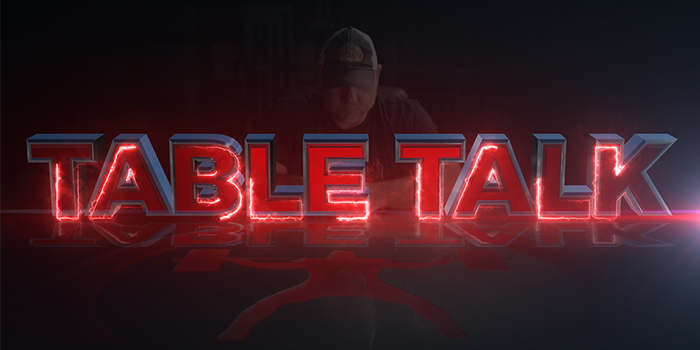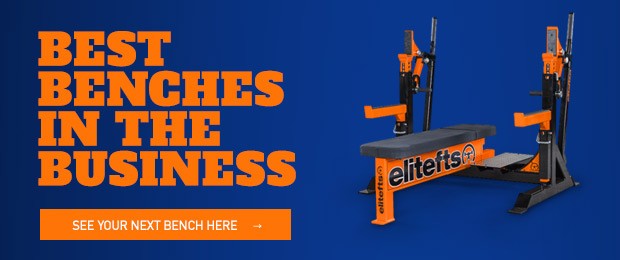
Bar path is one of the more hotly debated aspects of the bench press. Should you press the bar in a straight line or should you press back toward the rack, drifting over your face at lockout? For today's Table Talk, Dave responds to a question about differences in style between types of lifters in the sport of powerlifting:
"Why do so many top internet powerlifters suggest benching back toward the rack instead of a straight line like conjugate trained powerlifters suggest?"
Dave says first that there's an assumption in the question that all (or most) "internet powerlifters" think you need to bench back toward the rack and all (or most) conjugate style powerlifters think you need to bench in a straight line. This isn't really the case, so Dave simplifies the question to what actually matters:
"Should you bench in a straight line or back towards the rack?"
While this may seem like a big debate, Dave says it isn't actually a debate at all. The way you should bench is dictated by what fits your body structure best. Some lifters will press better in a straight line and some will press better drifting back. The important thing, though, is to look at the shared requirement in both of these styles: your elbows need to stay under the bar the whole time. The mistake of allowing your elbows, forearms, wrists, and the bar to go out of line can be made whether you press in a straight line or drifting back. For instance, if you press back toward the rack but don't turn your elbows out, you're going to end up either smashing your face or doing a triceps extensions to lock it out instead of a press to lock it out.
Which style is ideal for you depends a lot on the length of your upper arm and the location of your touch point. But you shouldn't try to over-analyze this because it's usually going to be what's most comfortable for you. As long as the bar is staying in line with your wrists and your forearms, you can press in a straight line or press back and neither of them are wrong.
Dave continues to discuss the differences between technique, form, and style in the bench press. Technique is the traditional advice you'll hear from most coaches and is fairly consistent. Consider this "book technique," including things like keeping your butt on the bench, gripping the bar around or outside of shoulder width, and touching the bar somewhere mid-chest. This is the set of general rules that apply to all lifters. After technique, you have form and style. Form and style are personal and depend on your body's structure, accounting for small changes that enable you to get the most out of your strengths and weaknesses. Think of form and style as the unique things that help the individual lifter but don't apply to all lifters in general. Steve Goggins' unique squatting form is a good example of this.
As you're learning and improving the bench press, technique gets laid down first. This is where you have to learn the basics. Then you account for individual body structure, mechanics, and personal factors. Finally, you make minor specific adjustments that apply only to you, such as a different grip because of an old wrist injury or a lower touch point because of shoulder pain. When people discuss improving the lifts, Dave says that they tend to focus solely on the top level technique, with basic things like your feet on the floor, your back on the bench, and pressing the weight after you've lowered it to touch your chest. This is simple and cut and dry. Where more attention needs to go is to the individual level, making adjustments on form and style.
Good coaches are able to identify and adjust lifters based on their individual form and style. No matter what programming background they come from or philosophy they have on the execution of the lift, a good coach will be able to identify the best approach for the individual lifter.










